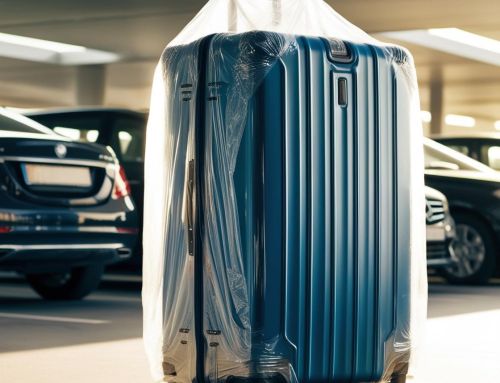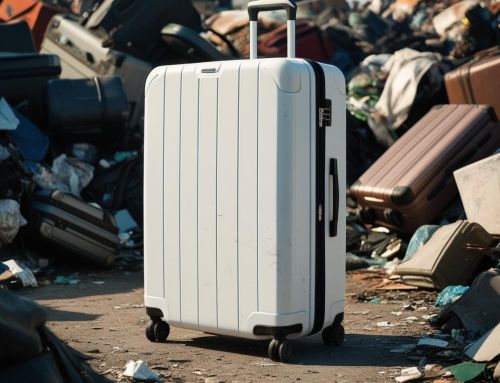QR Codes for Luggage: A Modern Solution for Travellers
In today’s fast-paced world of travel, lugging around heavy suitcases and worrying about lost luggage are common concerns for many travellers. However, thanks to modern technology, there is now a convenient and innovative solution to help travellers track their luggage easily and efficiently – QR codes.
Using QR codes as luggage tags for your suitcase or personal valuables can significantly enhance the security and retrieval of your belongings during travel. QR codes enable quick access to your contact information, facilitating the return of lost items. When someone scans your QR-coded luggage tag, they can view your details and reach out to you directly, streamlining the process of recovering misplaced luggage.
Benefits of QR Code Luggage Tags
Enhanced Recovery: If your luggage is lost, individuals can scan the QR code to access your contact information and notify you, increasing the chances of a swift return.
Privacy Protection: QR codes can be designed to display limited information, safeguarding your privacy while still providing essential contact details.
Ease of Use: Creating and printing QR code luggage tags is straightforward.
Ease of identification: With a unique QR code attached to their luggage, travellers can quickly and easily identify their bags amongst a sea of similar-looking suitcases, reducing the risk of picking up the wrong bag by mistake.
Lost baggage prevention: In the unfortunate event that luggage goes missing, the QR code can help airlines and airport staff quickly locate and identify the owner of the bag, expediting the process of reuniting travellers with their belongings.
How to use QR codes for luggage
Using QR codes for luggage is simple and convenient. Here’s how travellers can make the most of this innovative technology:
Create a unique QR code: Services like ours allows users to generate personalised QR codes for free. Simply enter the relevant information, such as name, contact number and the service will generate a QR code that can be printed and attached to the luggage.
Affix the QR code: Once the QR code is generated, travellers can print it out and attach it securely to their luggage using a luggage tag or adhesive label. Make sure the QR code is easily accessible for scanning but protected from damage during travel.
Scan and check: Before heading to the airport, travellers can scan the QR code with their smartphone to ensure that all information is accurate and up to date.
FYI: The Difference Between AirTags and QR Codes for Travel Luggage
AirTags: AirTags are small, lightweight tracking devices developed by Apple that can be attached to your belongings, including your travel luggage. These small devices use Bluetooth technology to connect to your iPhone, allowing you to track the location of your bags in real-time. The AirTag can also emit a sound to help you locate your luggage in a crowded airport or bus station. However, AirTags do require an iPhone to be able to track and locate your belongings, which may be a limitation for some travellers who do not use Apple products.
QR Codes: On the other hand, QR codes have been used for years as a way to quickly access information with a simple scan. When it comes to travel luggage, attaching a QR code to your bags can provide crucial information, such as your name and contact details. In the event that your luggage gets lost or misplaced, a Good Samaritan or airline staff can scan the QR code and contact you to arrange for the return of your belongings. The main advantage of QR codes is that they are universal and can be scanned by any smartphone with a QR code reader app, making them accessible to all travellers regardless of their phone brand.
AirTags or QR Codes? Or Both? Which is Best for You?
The choice between AirTags and QR codes for travel luggage ultimately depends on your personal preferences and travel habits. If you are an iPhone user and want real-time tracking of your bags, AirTags may be the ideal choice for you. However, if you prefer a universal and accessible option that can be scanned by any smartphone, QR codes may be more suitable for your needs.
When considering which option to choose, think about your travel destinations and the airports you will be passing through. Some airports may have restrictions on using Bluetooth enabled devices like AirTags, which could impact their effectiveness. On the other hand, QR codes are a low-tech solution that is widely accepted and can be easily scanned by airport staff in case of lost luggage. To be sure, it’s probably best to use both technologies.
In conclusion, both AirTags and QR codes offer innovative ways to track and identify your travel luggage. Whether you prefer the high-tech features of AirTags or the simplicity of QR codes, both options can provide peace of mind while you explore new destinations. So, before your next trip, consider which tracking method aligns best with your travel style and needs.
In conclusion, QR codes for luggage offer a modern and efficient solution for travellers looking to streamline their travel experience and minimise the stress of lost luggage. By leveraging this innovative technology, travellers can enjoy peace of mind knowing that their belongings are safe and secure throughout their journey. So, why not give QR codes for luggage a try on your next trip?
Looking for a convenient way to track your luggage while travelling? Discover the benefits of using QR codes for luggage and how to make the most of this innovative technology.





